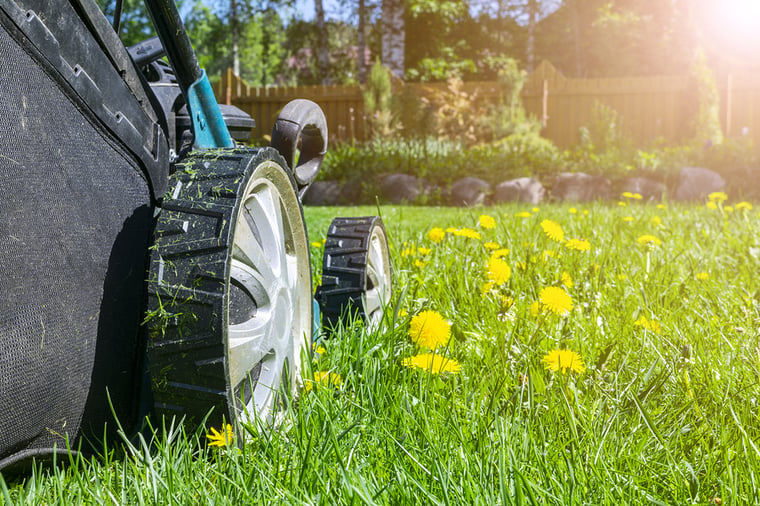
Fall is a great time to tackle all those home maintenance tasks plaguing your to-do list. To get the most from your efforts, it's important to know how to complete the job correctly. Here are a few home maintenance myths that you need to know about:
4 Home Maintenance Myths You Shouldn’t Believe
Myth 1: It's Best to Cut Your Grass as Short as Possible
When mowing your lawn, it's tempting to cut your grass as short as possible so that you can extend the length of time until your next mowing session. After all, your time is limited, and it takes longer for shorter grass to reach a height that needs to be mowed. Unfortunately, cutting your grass too short ultimately does more harm than good for the health of your lawn. Cutting grass too short puts unnecessary stress on your lawn that makes it more susceptible to a variety of issues.
If you cut your grass too short, this produces an environment that's conducive to the growth of weeds and the development of lawn diseases. Grass that's cut too short will also lose moisture faster, potentially increasing your irrigation costs or causing the grass to wilt and look dull.
Instead of cutting your grass as short as possible, opt for a grass height that removes only the top third of the grass blade. This will stimulate grass growth without overstressing your blades. Strive for grass that's approximately 2.5 inches in height after you're done mowing; this ensures that it is an optimal height, even after you mow it. Assuming you cut your grass down to 2.5 inches, you'll need to mow again when the grass is about 3.66 inches high.
If you really want to decrease the amount of time that you spend mowing, consider investing in a lawn mower that cuts a larger surface area. Check that your blades are sharpened, as sharp blades will cut better while minimizing the amount of damage to your lawn.
Myth 2: The Test Button on Your Smoke Alarm is the Most Effective Way to Test It
You should test your smoke alarm once a month to ensure that it's working correctly. However, it's a myth that using the alarm's test button is the best option to see if it's working correctly. The test button checks that the alarm's sound is working correctly; however, it doesn't confirm that the alarm responds appropriately to the smoke created by a fire.
Instead of relying solely on the test button, check that your smoke alarm is working by exposing it to a contained heat source that produces smoke. One of the easiest options is to light a match or two, blow them out, and hold them a few inches under your smoke alarm. Matches produce enough smoke to test your alarm without overwhelming your entire home with smoke and odor from an open flame. Another alternative is to purchase a can of smoke specifically intended for testing smoke alarms.
Myth 3: You Only Need to Replace Your Furnace Filters Seasonally
Though replacing your furnace filter when the season changes is better than never changing it, to make certain that your filter is effectively removing allergens from your home's air, you may need to change the filter more frequently. Dirty air filters also make it difficult for your home's heating and cooling system to operate efficiently, potentially causing your energy bills to skyrocket.
The exact frequency you need to change your furnace filter depends on multiple factors, including the type of filter that you have, whether you own pets, the climate you live in, the activities in your home, and whether you have allergies. Higher quality air filters can go longer between changings than cheap ones. Cheap air filters don't have the longevity of their high-end counterparts and should be changed every month or so. Some quality air filters can go a few months between changes, depending on the interior environment of your indoor climate.
If your home is in an environment that's dry with a lot of dust, like Las Vegas, you'll need to change your filter every month. If you live in a location with high humidity, every three months or seasonally is usually sufficient. You may like to open your windows to allow a refreshing breeze inside. However, opening the windows also makes it possible for dirt and other particles to enter your home, making frequent air filter changes a necessity.
Homes with pets or people who smoke likely require monthly air filter changes. If anyone in your home has allergies or asthma, stick with monthly air filter changes to be on the safe side. Your family may include children, or you might have kids who frequently visit your home. Err on the side of caution and adhere to a monthly changing schedule, as children are typically more sensitive to poor air quality.
Myth 4: You Should Add Chemicals to Your Pool During the Day
It's a misconception that the best time to add chemicals to your pool is during the daytime. During the day hours, the UV radiation from the sun hits your pool and causes many of the chemicals, including chlorine, to be less effective. The earlier the time of day that you put chlorine in your pool, the longer it will be exposed to the sunlight. In other words, adding chlorine first thing in the morning provides a longer degradation time than adding it in the afternoon or evening.
If you add chemicals in the morning, you'll have to use more in order to keep your pool clean and restore the water so that it's at the appropriate pH level. Not only does adding chemicals during the night or evening hours make it easier for you to properly care for your pool, but it helps reduce the amount of money you ultimately spend on your pool maintenance.
For more home maintenance tips and best-practices, check out these blog posts:

















